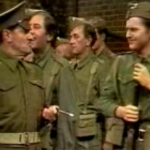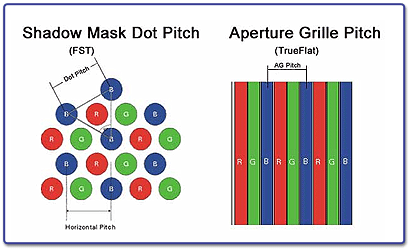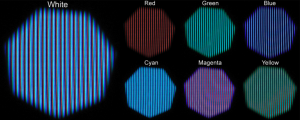 Here is one of those moments where I said to myself: “I wish I had thought of that”.
Here is one of those moments where I said to myself: “I wish I had thought of that”.
Several episodes of the classic British comedy series “Dad’s Army” were thought to have been lost, due to the original videotape being wiped for re-use, some 40 years back. Then someone recently found black and white copies on 16mm film. Better than nothing, but of course colour infomation gone for ever – or so you would think.
A bit of technical explanation: colour in television works on the “additive” principle of mixing red, green and blue light in the right proportions in order to create almost any colour. You can see this “RGB” pattern by looking at a TV screen or computer monitor with a magnifying glass. You will typically see a pattern of dots or vertical stripes:

Here is how the proportion of intensity in the lines are varied to create any colour:
Normally these patterns are small enough not to be visible.
Now the black and white copies of the Dad’s Army episodes were made, rather crudely, by pointing a film camera at a high quality (colour) TV screen, and shooting (in black and white). And guess what – the quality of the camera was high enough to record the individual dots. So by looking at the relative brightness of each dot in a group of three, we can deduce the colour information at that point. Absolutely delicious use of technology!
Here is a clip I saw on BBC TV explaining it:
[youtube]http://www.youtube.com/watch?v=24k78nxSp4I[/youtube]


Richard Russell
December 1, 2009 at 10:14 am
A more accurate explanation is here:
http://colourrecovery.wikispaces.com/How+colour+recovery+works
kaveh
December 1, 2009 at 10:40 am
Thanks for the explanation Russell. I will read the article. 🙂
Tim
July 3, 2010 at 3:09 am